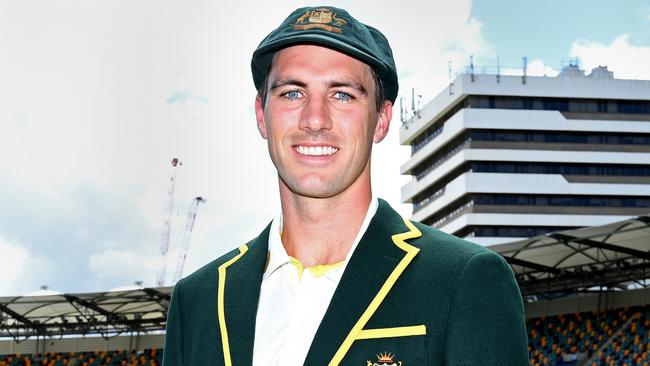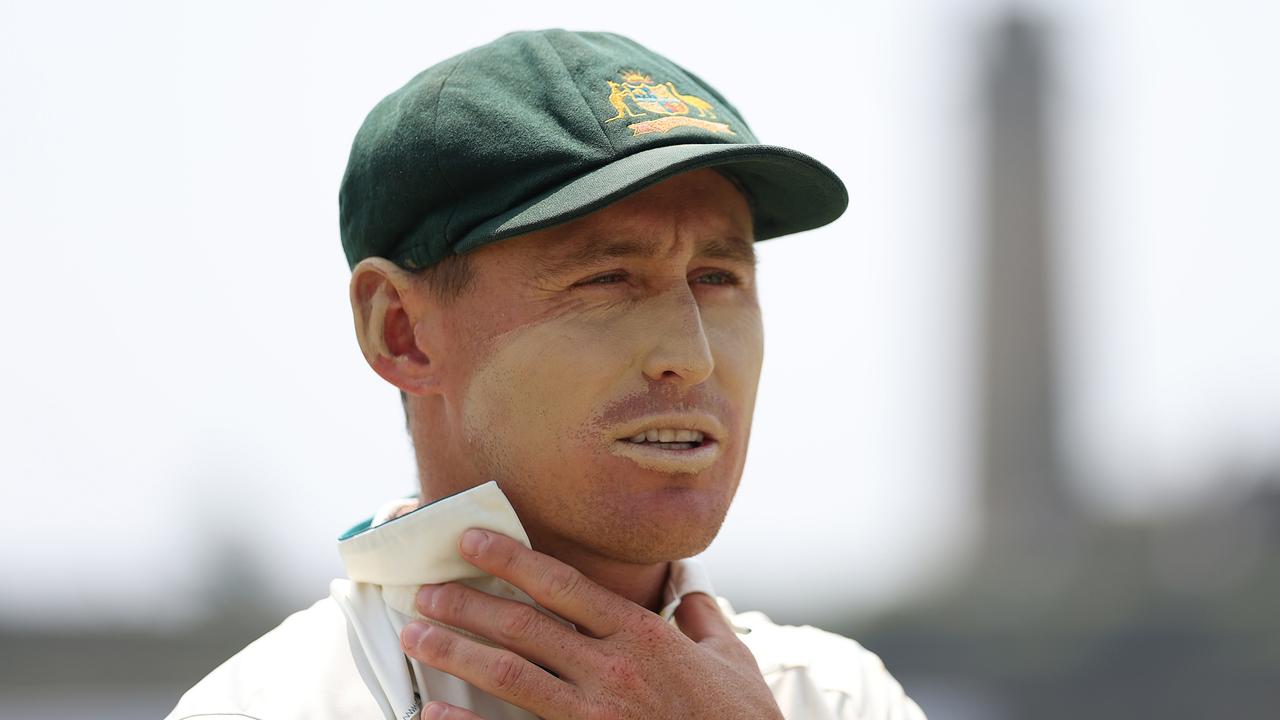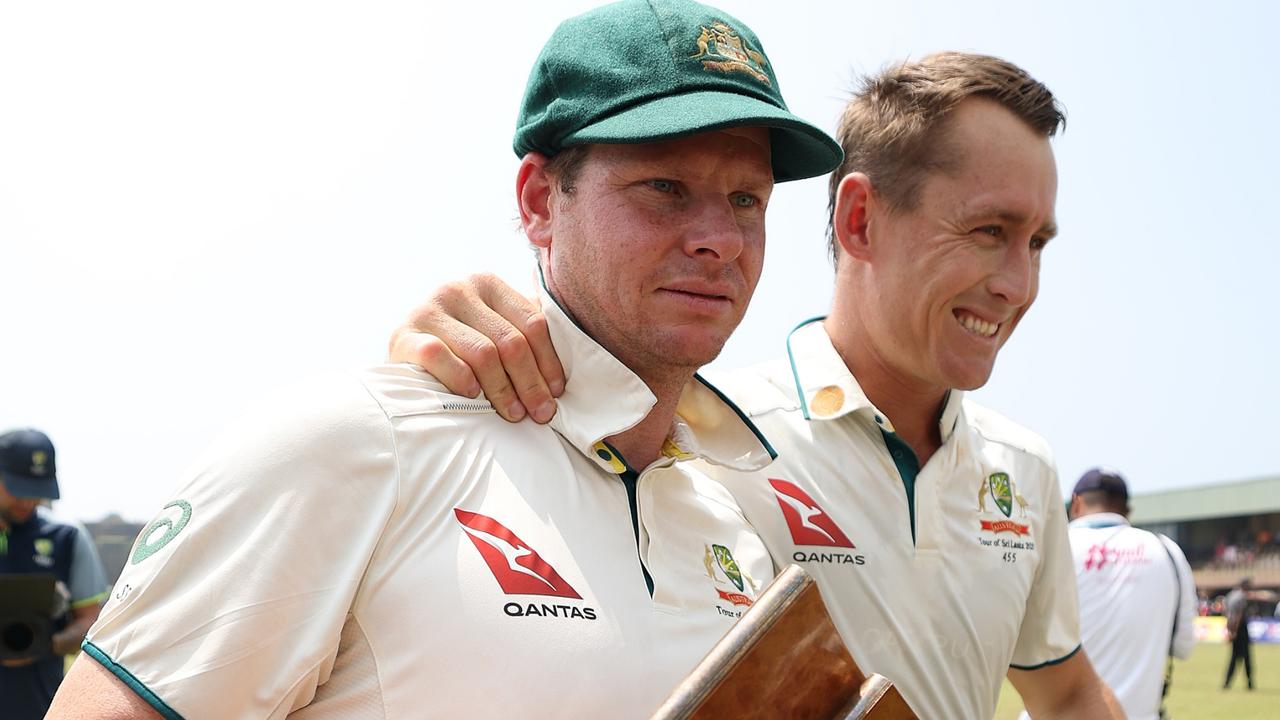
“Our head hunters should recommend a fast bowler only as a last resort.”
Mike Brearley, The Art of Captaincy
Story goes that during the long injury hiatus between his first and second Tests, a gap of almost six years, Pat Cummins grew tired of the daily commute between his parents’ home in the Blue Mountains, NSW, and the campus at the University of Technology Sydney, where he was studying for a business and marketing degree. He asked whether it would be possible to use the parking reserved for senior staff, given there was no provision for students.
When his mother found out about this, she gave him the kind of dressing down that only mothers can. Cummins was told in no uncertain terms that the request was out of order, that it suggested someone grown a little too big for his boots after only one successful Test, and that a written apology should be forthcoming. One was duly sent and the slog to and from studies resumed.
The tale is taken from an excellent profile of Cummins in The Australian recently, a timely one coming as it did weeks before his sudden elevation to the captaincy. The tone reflected many others written since Cummins was appointed Australia’s 47th Test captain after Tim Paine’s resignation. Here, they suggest, is a cricketer Australia can rely on: humble, grounded, curious and committed, bringing both cricketing excellence and a wider perspective. The right man.
Reading the profiles, there has been an echo of the comments about Alastair Cook from the former ECB chairman Giles Clarke, who said Cook and family were “very much the sort of people we want the England captain and his family to be”. Portrayed as beyond reproach — never a good cross to bear — Cummins himself has been quick to dampen unrealistic expectations, but he has been put on notice by the comments of Cricket Australia chairman Richard Freudenstein after Paine’s resignation.
Cummins is the son of an accountant and a teacher; one of five siblings, two brothers and two sisters. A solid, family-orientated country upbringing. A sporty, but not too sporty a background, and a precociousness that brought him a first-class debut at 17 and a Test debut eight months later, hitting the winning runs and taking the man of the match award in Johannesburg.
But then injuries: one stress fracture after another and a long period of rehabilitation, which is when he resumed his studies and met his future partner, Becky Boston, who comes from Harrogate, North Yorkshire. They welcomed their first child, Albie, in October.
Another profile, in The Sydney Morning Herald, told the story of how they met one night in a bar in Kings Cross, Sydney, and Cummins introduced himself as a student not a cricketer, something that remained hidden until she saw an advertisement with Cummins in whites. Modest, then, with perhaps a proper appreciation of where sport sits in a life well lived — an awareness not always granted to the modern player.
Cummins has maintained a curiosity about matters beyond the boundary since his international career resumed. His Instagram list of favourite books read this year is not the usual sportsman’s catalogue. He is politically progressive, interested in climate-change issues, for example, without being too preachy. In short, he seems intelligent, well spoken and clean-cut, a timely candidate for an organisation worried about corporate reputation after the teary exits of the past two captains.
But what about the cricket?
Cummins’s status as an elite performer is beyond argument. He lays good claim to being the best fast bowler in Test cricket today, and is ranked the No.1 Test bowler. He is strong and fast, and, having overcome the serious back injuries of his youth, has put together an impressive CV. Like Virat Kohli, he carries a torch for Test cricket, having frequently announced it as his favourite form of the game, despite the millions earned in the Indian Premier League.
But, with a nod to Brearley’s quote at the outset, there must be good reason why, in a game now almost 150 years old, fast bowlers have generally been overlooked for the top job. Since the Second World War, Australia have chosen only one, Ray Lindwall, and then only for a one-off Test. In recent years Bob Willis, Courtney Walsh and Waqar Younis spring to mind as out-and-out fast bowlers to have been given the captaincy of their national teams, but few others.
Brearley came back to the England captaincy after the ill-fated experiment with Ian Botham, a move that diminished the great all-rounder as a player. Botham had lost his spark and his confidence. As a player, Botham wanted to bowl all day long; as a captain, he was never quite sure when or how long to bowl himself for, a key challenge for a bowler-captain. “They tend to either overbowl themselves or not bowl enough, from conceit, modesty or indeed self-protection,” Brearley wrote.
There are many all-rounders who have taken to captaincy with distinction. Ray Illingworth is regarded as one of England’s toughest, most pragmatic and successful captains. Richie Benaud is thought to have been one of the shrewdest and most imaginative for Australia (and it is often said that the all-rounder Keith Miller was the best captain Australia never had). Imran Khan was an inspirational captain of Pakistan. Specialist fast bowlers, not so much.
Willis was thought to have done a decent job, but Brearley touched on the difficulties. With ball in hand, Willis “shut himself into a cocoon of concentration and fury”, so maintaining some kind of tactical awareness at the same time must have been difficult.
England have never plumped for a fast bowler since, despite the claims to seniority of Stuart Broad and James Anderson. Brearley wrote: “It takes an exceptional character to know when to bowl, to keep bowling with all his energy screwed up into a ball of aggression and to be sensitive to the needs of the team, tactically and psychologically.”
Can Cummins manage all this? Can he break the mould? Can he control his emotions in a one-on-one contest with a batsman and think critically and coolly about the bigger picture? Can he find the right balance between under-bowling and overbowling himself? How will he combine the extreme physical demands with the constant requirement to be thinking about the game. No more grazing at fine leg in between overs to rest up. Will his body last the course?
All these are legitimate questions that must be answered.
At the Gabba on Sunday, he lined up with Joe Root alongside a giant replica urn and he certainly looked the part. Still, anyone who says that Rocky IV is the best sports movie ever made must have his flaws.
It is on the field, as Cummins tries to balance the intense demands of captaincy and fast bowling, that England will look to expose them.
The Times



